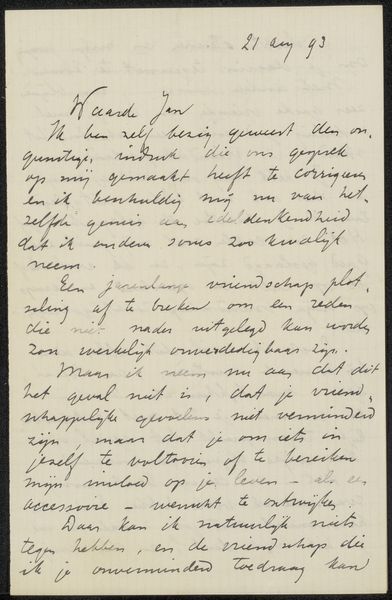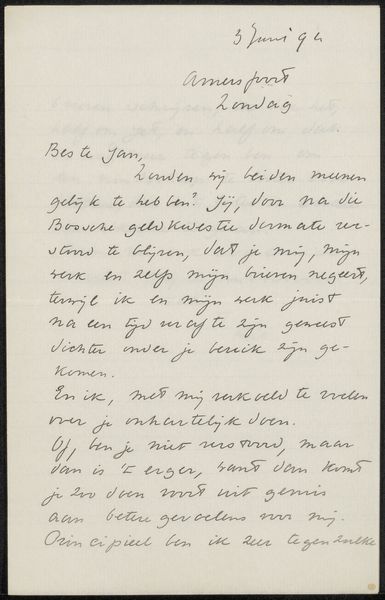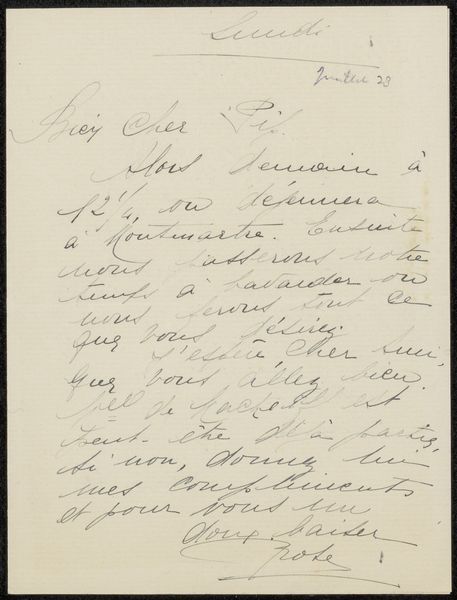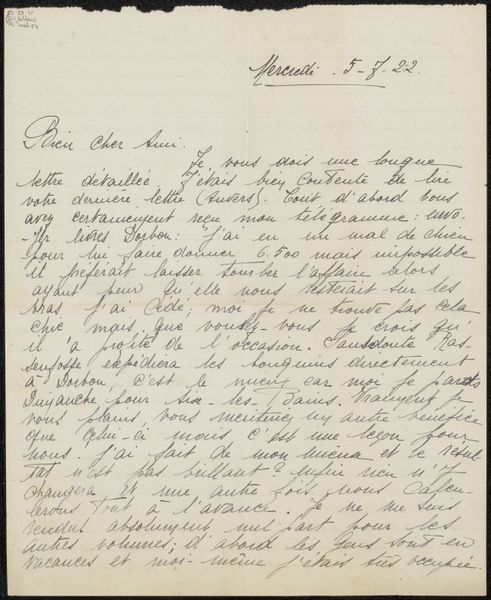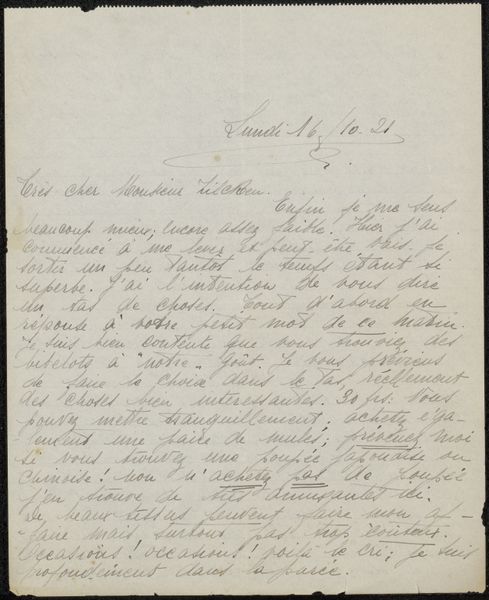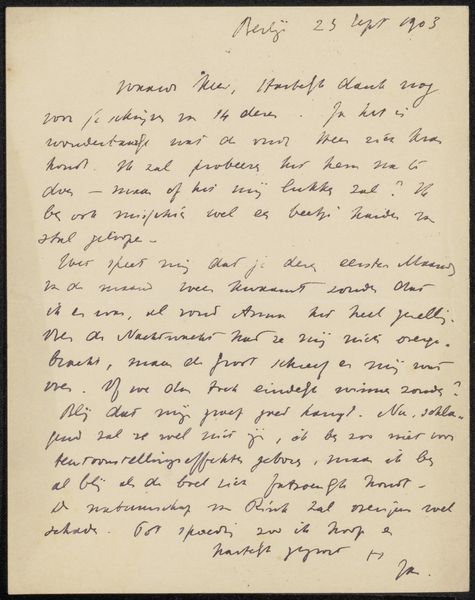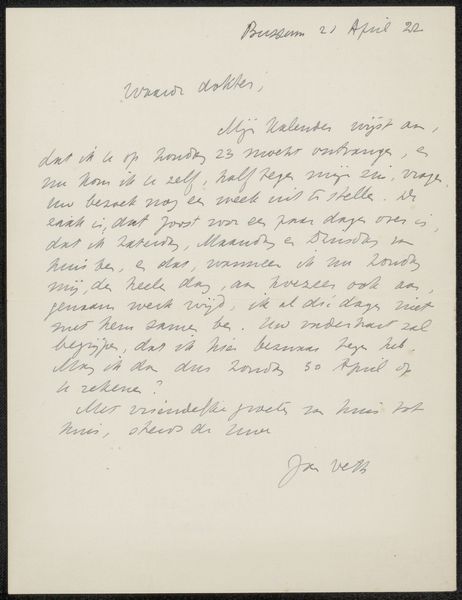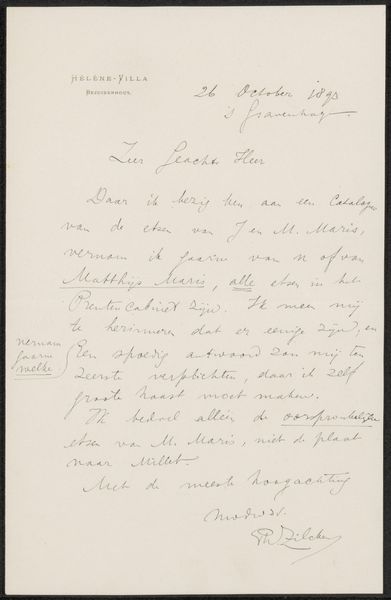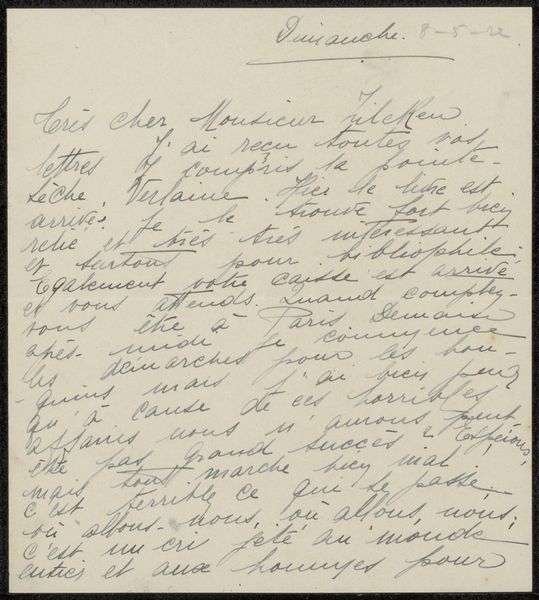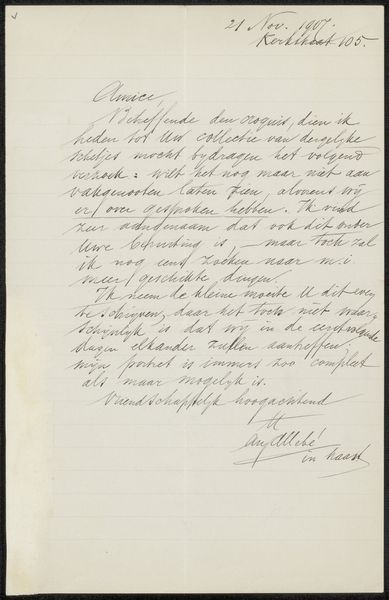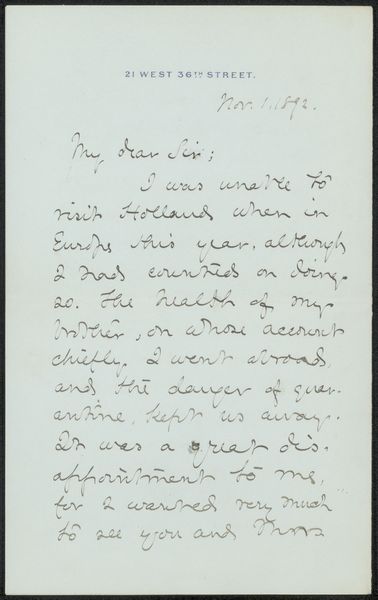
drawing, paper, ink, pen
#
portrait
#
drawing
#
self-portrait
#
ink paper printed
#
old engraving style
#
hand drawn type
#
paper
#
personal sketchbook
#
ink
#
hand-drawn typeface
#
intimism
#
pen-ink sketch
#
ink colored
#
pen work
#
sketchbook drawing
#
pen
#
sketchbook art
Copyright: Rijks Museum: Open Domain
Editor: So, this is “Brief aan Philip Zilcken,” possibly from between 1893 and 1899, by Frederik van Eeden. It’s an ink drawing on paper, and it looks like a handwritten letter. What strikes me is how intimate and personal it feels, like a peek into a private conversation. How do you interpret this work? Curator: That feeling of intimacy is key. We're seeing a convergence of art and personal communication, something radical for the time. Van Eeden was deeply engaged in social reform and psychological exploration, right? Think about the context: The late 19th century was a time of immense social upheaval, where marginalized voices struggled for visibility. How might a seemingly simple letter intersect with these broader societal currents? Editor: Maybe the act of writing and sending a letter was a way to forge connections and offer support in a fractured society? Curator: Exactly! And consider the intended recipient. Understanding Zilcken's social position or artistic circle might illuminate the letter’s underlying motivations. Was this an act of solidarity? A challenge to the status quo? Also, notice the handwriting itself. Is there a particular kind of deliberate mark making at play, which might give clues about the artistic inclinations? Editor: It almost feels like he wanted the handwriting to feel raw, imperfect. I am curious what did Van Eeden meant with writing this letter? Curator: The content itself surely holds significance, but beyond the literal message, it signifies relationship, community, perhaps resistance against social alienation of its time. Don't you think that’s fascinating? Editor: Absolutely! It makes you wonder about the stories behind these historical figures and the power of simple human connection. I initially saw it as a simple letter, but the intersectional historical context really unlocks another level of understanding and meaning.
Comments
No comments
Be the first to comment and join the conversation on the ultimate creative platform.
